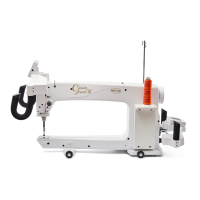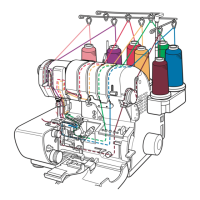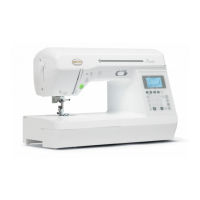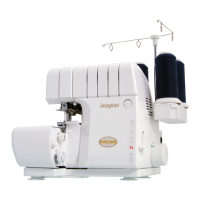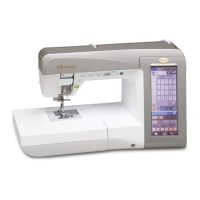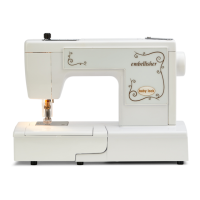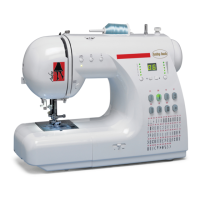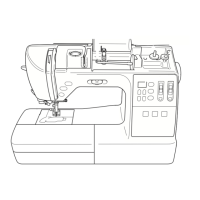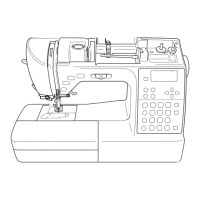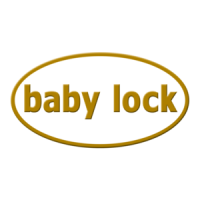
Do you have a question about the Baby Lock Regent BLRT18 and is the answer not in the manual?
| Number of Stitches | 18 |
|---|---|
| Buttonhole Styles | 1 |
| Needle Positions | 3 |
| Feed System | Drop Feed |
| Maximum Stitch Width | 5 mm |
| Maximum Stitch Length | 4 mm |
| Bobbin Type | Class 15 |
| Needle Threader | Yes |
| Stitch Selection | Dial |
| Stitch Length Control | Manual |
| Stitch Width Control | Manual |
| Free Arm | Yes |
Read all instructions before use and follow essential safety precautions for machine operation.
Lists critical safety warnings for electric shock, burns, fire, and personal injury.
Provides essential guidelines for the safe operation of the sewing machine.
Details the technical specifications, dimensions, and capabilities of the Regent quilting machine.
Provides instructions for assembling and preparing the specialized quilting table.
Details the steps for safely mounting the quilting machine onto the prepared table.
Connects the power cord to the machine and the electrical power source.
Connects the foot pedal, essential for controlling machine speed and operation.
Attaches the thread mast securely to the top of the sewing machine.
Provides guidance on selecting appropriate needles and threads for various fabrics and quilting needs.
Procedures for cleaning the machine's hook assembly and general lubrication.
Details functions of buttons on the main screen when the machine is in Manual Mode.
Explains controls for regulated sewing modes like Stitches Per Inch (SPI).
Addresses causes and solutions for skipped stitches, including needle damage or improper installation.
Covers problems related to tight/loose thread tension and improper machine threading.
Solutions for improper needle positioning, needle breaks, and hitting the throat plate.
Addresses puckered stitches due to unbalanced tension or incorrect needle size selection.
Covers poor stitch quality, bobbin case issues, thread backlash, and quilt movement speed.
Explains how lint in the bobbin area can cause poor thread tension.
Solutions for thread nests, improper threading, and thread backlash from the bobbin.
Addresses thread breaks from poor quality, twisting, or unbalanced top/bobbin tensions.
Covers breaks from bent needles, unsuitable needles, and improper machine timing.

